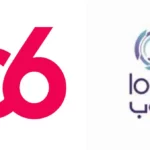
Importance of Responsible Technology Integration in Schools

By, Shanon Pipes – Principal – One World International School Riyadh
As digital technology is becoming increasingly pervasive, it is more important for schools to thoughtfully and responsibly integrate EdTech tools into curriculum. Students can reap significant educational benefits by getting acquainted with age-appropriate learning applications and platforms.
Technology can personalize learning. This includes providing targeted content and resources based on students’ individual needs and interests. It can also be used to facilitate collaboration between students and teachers. Moreover, it promotes student engagement in the classroom through interactive media and gamification techniques.
For teachers, technology can be used in effective learning assessments through data analytics, tracking student progress along with real-time feedback. Technology integration can also be used to support professional development for teachers through online resources and tools to plan and deliver lessons. Schools should be aware of the varied technologies available and how they can be used in the classroom to unlock future-oriented learning for both students and teachers.
Some insights to responsibly integrate digital technology include:
– Choose age-appropriate applications and platforms: Make sure to select applications and platforms that are age-appropriate for your students. Ensure there is a clear educational purpose for using digital technology in the classroom. Raz-kids, the literacy learning platform currently being used at OWIS, helps in literacy development which makes reading accessible and engaging wherein students can listen to books for modeled fluency, read books for practice and record themselves reading so teachers can monitor progress; and IXL Learning for math and numeracy skills development, which offers a delightful experience to students that is full of vibrant visuals and interactive questions, making learning an adventure.
– Teach digital citizenship and encourage responsible usage: Help your students understand how to use digital technology responsibly and safely. This can include learning to deal with cyberbullying, online predators, and internet safety. Encourage students to use technology mindfully, that is respectful of others. Teaching digital citizenship empowers students with the knowledge of right and fair use of technology. It’s important to implement an acceptable use agreement between students, teachers, and parents so that the whole school community is involved in responsible digital citizenship.
– Promote balance and cultivate safe learning environments: Encourage students to find a balance between their digital and offline lives. It is also essential to support the right of all members of the school community to access safe and inclusive learning environments, including digital and online spaces. On the path to become an Apple-powered school, our ICT acceptable use agreement form at OWIS, for instance, outlines the school’s roles and responsibilities in supporting safe digital learning, as well as the expected behaviors we have of our students when using digital or online spaces.
In recent years, the affordability and practicality of technology has caused its increased use in modern classrooms. Students should be exposed to future-focused teaching, particularly in an international school, and should have access to appropriate technology tools and a fundamental understanding of their mindful usage.












































